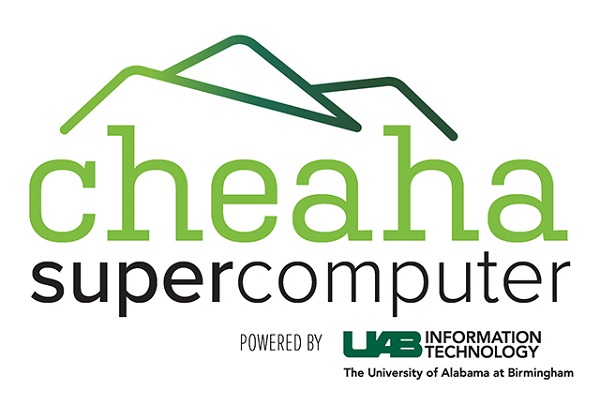 The University of Alabama at Birmingham is an internationally renowned research university and academic medical center known for its innovative and interdisciplinary approach to education. More than 1,200 UAB faculty are engaged in sponsored research fueled by funding from federal, state and local agencies, industry, nonprofits and foundations.
The University of Alabama at Birmingham is an internationally renowned research university and academic medical center known for its innovative and interdisciplinary approach to education. More than 1,200 UAB faculty are engaged in sponsored research fueled by funding from federal, state and local agencies, industry, nonprofits and foundations.
For universities around the world, a great deal of this scientific research now depends on the power of high performance computing systems that can churn through massive amounts of data to accelerate discovery and innovation. And when it comes to delivering this HPC power to academic researchers, UAB is at the head of the class.
Delivering the Power of HPC
Back in 2005, UAB launched its first general-access HPC cluster for the UAB research community. That system — named Cheaha, after Alabama’s highest peak — featured 64 nodes with a total of 128 cores. In the years since, the UAB research computing team has been on quest to make computational resources larger, faster and more accessible to the university’s research community.
A few highlights from this ongoing journey:
- In 2012, UAB IT invested in the foundational hardware to expand long-term storage and virtual machine capabilities with the acquisition of 12 Dell PowerEdge R720xd systems, creating a 192-core and 432-terabyte virtual compute and storage fabric.
- In 2013, UAB IT acquired an OpenStack cloud and Ceph storage software fabric, through a partnership between Dell and Inktank, to extend cloud computing solutions to the researchers at UAB and enhance interfacing capabilities for HPC.
- In 2016, the Cheaha supercomputer grew to 110 teraflops, to become the fastest supercomputer in Alabama. In the same year, the UAB IT team launched a 100Gbps network, one of the fastest in the state.
- In 2017, UAB added 72 NVIDIA GPUs, to boost the Cheaha supercomputer’s power to 450 teraflops. At that point in time, this expansion made Cheaha far and away the fastest supercomputer in Alabama and one of the five fastest supercomputers at academic institutions in the Southeast.
Today, this pursuit of HPC excellence continues as the UAB research computing team pushes forward with additional enhancements to the Cheaha cluster. Working closely with HPC specialists from Dell Technologies and NVIDIA, the UAB team recently expanded research computing resources.
This UAB addition incorporates four DGX A100 systems with 2nd Gen AMD EPYC processors. Each DGX system can allocate up to 56 GPU instances using NVIDIA multi-instance GPU (MIG) technology. Each server can be allocated to different virtual machines via an OpenStack cloud layer.
![]() “It gives us a solution for machine learning, both the training and inference aspects, as well as exploratory uses for data analysis,” says Ralph Zottola, Ph.D. and Assistant Vice President for Research Computing at UAB. “It lets us give our users virtual machines with GPUs enabled inside of them, if that’s what they need. These are systems that allow us to spin up virtual machines that have GPUs and that don’t have GPUs. We can choose the configuration on the fly.”
“It gives us a solution for machine learning, both the training and inference aspects, as well as exploratory uses for data analysis,” says Ralph Zottola, Ph.D. and Assistant Vice President for Research Computing at UAB. “It lets us give our users virtual machines with GPUs enabled inside of them, if that’s what they need. These are systems that allow us to spin up virtual machines that have GPUs and that don’t have GPUs. We can choose the configuration on the fly.”
Fueling Discovery and Innovation
In its latest iteration, the Cheaha supercomputer delivers seven petaflops of computational power, according to UAB Vice President and Chief Information Officer Curtis A. Carver Jr., Ph.D. In mathematical terms, that equates to the ability to perform seven quadrillion floating point operations per second. That kind of HPC horsepower allows researchers to tackle bigger and harder problems in the scientific discovery process.
Here are a few examples of the breakthrough research showcased on the UAB IT Research Computing site:
- Kristina Visscher, Ph.D., assistant professor of neurobiology, studies how the brain adapts after long-term changes in visual input, such as macular degeneration.
- Hassan Fathallah-Shaykh, a professor of neurology, works to detect cancer in MRI images using new mathematical models and techniques.
- David Crossman, Ph.D., bioinformatics director in UAB’s Heflin Center for Genomic Science, deciphers the sequences of human genomes for patients seeking a diagnosis in UAB’s Undiagnosed Diseases Program.
- Ryoichi Kawai, Ph.D., associate professor of physics, uses the supercomputer to lay the groundwork for a better infrared laser, which could be used for a variety of treatments, from shrinking tumors to removing kidney stones.
“Technology underlies the innovation and research here at UAB,” Dr. Carver says. “The supercomputer powers lifesaving research that can help UAB change the world.”
For the full story, see the Dell Technologies case studies “Teamed for Success” and “A next-generation network,” and tune in to the Addison Snell podcast featuring UAB leaders discussing their HPC system.



